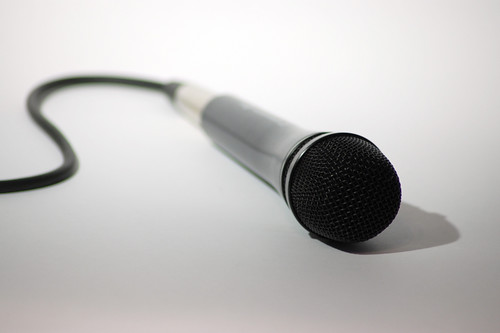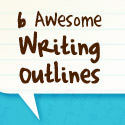 The following is a guest post from Eric Kent Edstrom and was an entry in February’s Self-Publishing Writing Contest.
The following is a guest post from Eric Kent Edstrom and was an entry in February’s Self-Publishing Writing Contest.
It’s November 1st, 2010 when I sit down to write my first novel. I open Scrivener, pop a can of Diet Coke, crack my knuckles, and start typing.
I pound out 10,000 words the first day.
The next day I decide to reread what I’d written. You know, to get a running start. I notice some things that need tweaking, so I take a second to fix them. In the process of fixing them, I realize that chapter two doesn’t quite make sense. I go back and … and end day two with a net -2300 words. Yes, minus. In the days that follow, I soldier on. But I keep going backwards, or sideways, writing a lot but making no real progress.
Flash ahead a few months. I’m in Salt Lake City at the Superstars Writing Seminar, put on by Kevin J. Anderson and Rebecca Moesta. One day, Kevin does a little segment on productivity. And there it is, the revelation of the century: you can dictate prose!
I have the same reaction that many others in the audience have: “That would never work for me.” And yet … it intrigues me.
When I return home, I buy a cheap digital recorder, print out a section of my outline, and go for a walk on a nearby bike path. Dictating feels weird at first. I’m self conscious, very aware of my voice, aware of long pauses as I try to figure out what is going on in my story. But after a half-hour or so I’ve forgotten all that. I’m deep into my story. I’m moving forward. I’m acting out the dialogue and having fun. I walk for two hours and come home with the first draft of four chapters done. Somewhere between 4000-6000 words. Yes, in two hours. (The six miles I covered also burned a bunch of calories, BTW.)
I’m a convert. From a productivity standpoint dictating can’t be beat. And speaking my story gives it energy and helps me capture my true voice. There’s less friction because the story doesn’t have to pass through my fingers on the way out.
If you want to try dictating fiction, here are some tips:
- Make sure your recording device is on and in record mode. Check to see the seconds ticking by. If there is a red light that’s supposed to be on, make sure it’s on. There’s nothing worse than thinking you’ve got a chapter in the can and finding out you’ve got nothing.
- To get over self-consciousness, dictate where no one can hear you. I like to go for a walk. If it feels silly, make it sillier by doing a funny voice.
- Don’t worry about grammar, passive voice, dialogue tags, or any other stylistic concern. Just tell the story. You’ll likely be surprised by how readable your dictation turns out to be.
- If you think you’ve committed a continuity problem, just say “Note to self, check that one chapter where he sees the gun on the mantle. I can’t remember what kind it was.”
- Don’t transcribe the recordings yourself. Have your spouse, your aunt or that lady from church who used to be a teacher do it. You can also a hire transcription services on the web. I use wescribeit.com, but I know there are others.
- Walk while you talk. It’s good exercise and it gives the dictation more energy.
- Go ahead and make up different voices for your characters. Just make sure your words are clear enough for the transcriptionist to understand.
- If you’re writing science fiction or fantasy where you have a lot of unusual names, create a document for the transcriptionist to refer to. If you remember, you can spell it out right there on the spot.
- Don’t listen to the recordings.
- If you’re outside, consider getting a wearable mic (like a hands free device). Keeping the mic closer to your mouth will provide clearer recording and less background noise.
About the Author: Eric is the author of Undermountain, a YA adventure. He’s also a songwriter and guitar player. He lives in Wisconsin with his daughter, wife and his wife’s feeble cat.
 We're
We're 








